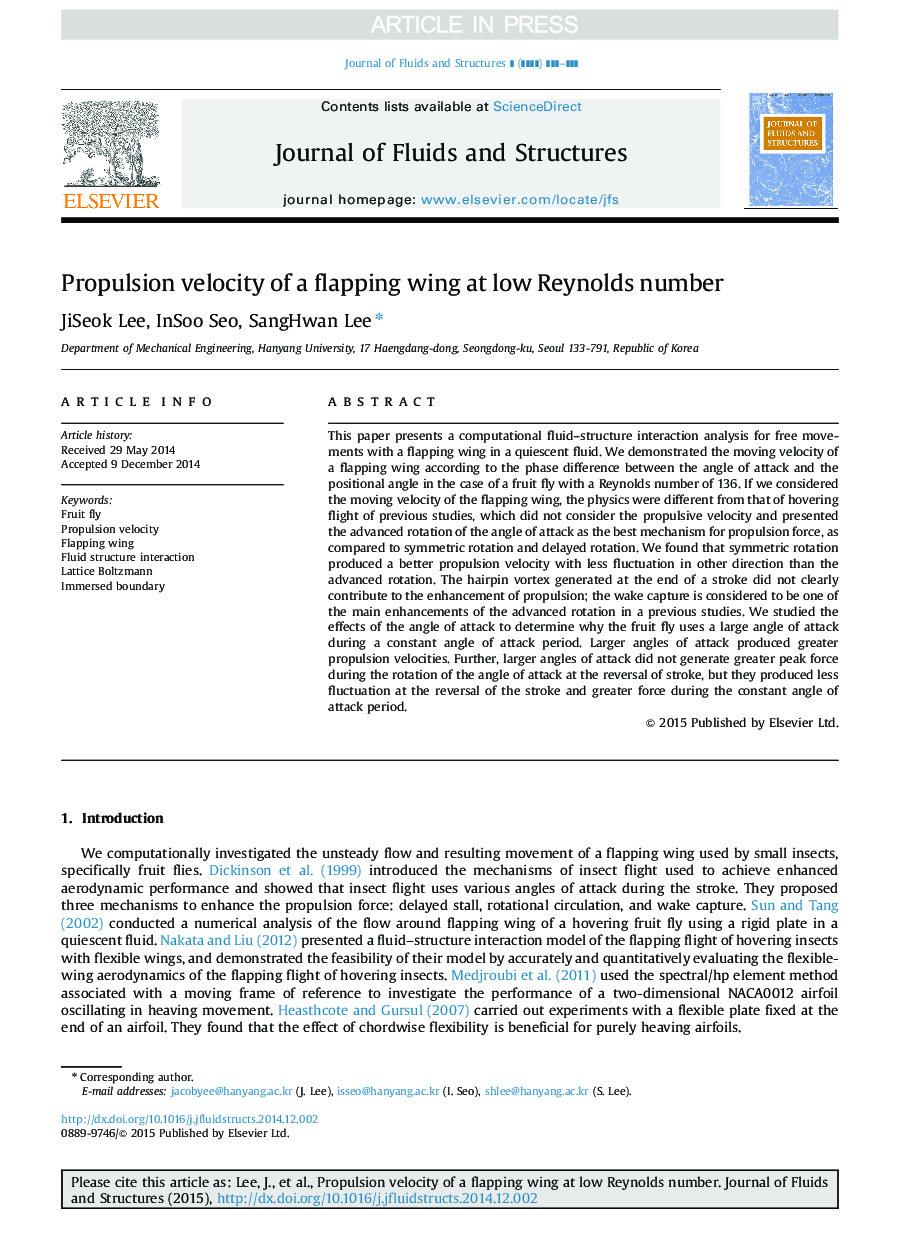| Article ID | Journal | Published Year | Pages | File Type |
|---|---|---|---|---|
| 7175975 | Journal of Fluids and Structures | 2015 | 18 Pages |
Abstract
This paper presents a computational fluid-structure interaction analysis for free movements with a flapping wing in a quiescent fluid. We demonstrated the moving velocity of a flapping wing according to the phase difference between the angle of attack and the positional angle in the case of a fruit fly with a Reynolds number of 136. If we considered the moving velocity of the flapping wing, the physics were different from that of hovering flight of previous studies, which did not consider the propulsive velocity and presented the advanced rotation of the angle of attack as the best mechanism for propulsion force, as compared to symmetric rotation and delayed rotation. We found that symmetric rotation produced a better propulsion velocity with less fluctuation in other direction than the advanced rotation. The hairpin vortex generated at the end of a stroke did not clearly contribute to the enhancement of propulsion; the wake capture is considered to be one of the main enhancements of the advanced rotation in a previous studies. We studied the effects of the angle of attack to determine why the fruit fly uses a large angle of attack during a constant angle of attack period. Larger angles of attack produced greater propulsion velocities. Further, larger angles of attack did not generate greater peak force during the rotation of the angle of attack at the reversal of stroke, but they produced less fluctuation at the reversal of the stroke and greater force during the constant angle of attack period.
Related Topics
Physical Sciences and Engineering
Engineering
Mechanical Engineering
Authors
JiSeok Lee, InSoo Seo, SangHwan Lee,
